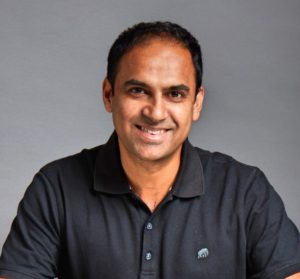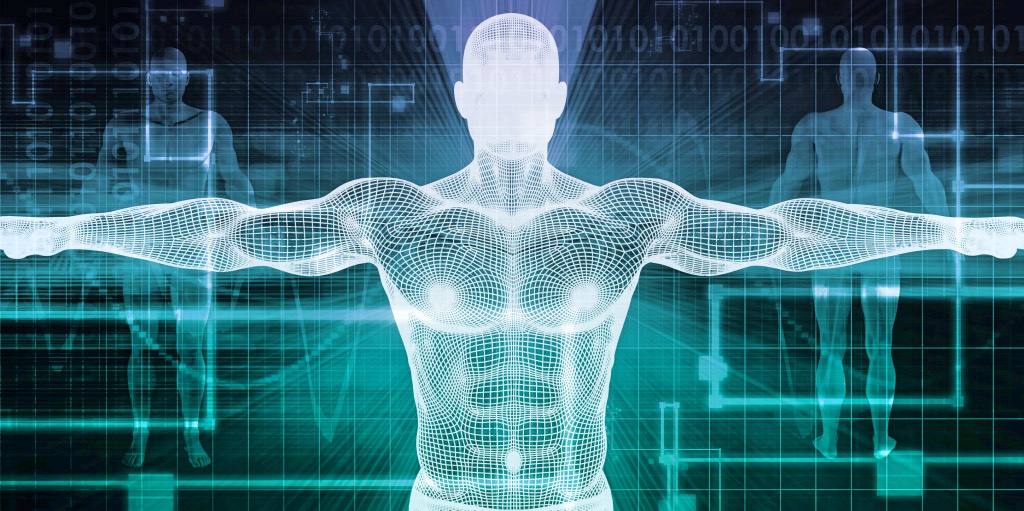Tuberculosis (TB) is highly treatable and remains an unsolved problem. India has the highest burden of both TB and drug-resistant TB in the world, with 2.7 million of the world’s 10 million people diagnosed with the disease in 2017. There are 2 main obstacles in the fight against TB in India: A lack of resources to accurately diagnose and treat the infected people and the stigma around TB – due to the taboo surrounding TB, most people are reluctant to get tested.
Qure.ai is an Indian healthcare AI startup that applies artificial intelligence and deep learning technology to radiology imaging for quick and accurate diagnosis of diseases. It has devised an AI solution that can accurately detect TB cases in less than 3 mins, through just X rays. Its algorithms are equipped to run on cloud hardware, limiting the onsite hardware requirements to be as small as a $50 Raspberry Pi and the cost of these scans are less than a $1.

Prashant Warier, CEO, Co-Founder – Qure.
Something that currently takes almost weeks to get diagnosed, now can be screened in less than 5 minutes. Through this technology, even the most remote primary healthcare centers and healthcare workers can detect TB at onset and provide treatment on the very same day. This is a major step in the fight to eradicate this disease at minimal costs.
Apart from TB, Qure.ai’s solution can detect 16 other abnormalities from a chest X-ray.
In an email interview with Digital Creed, Prashant Warier, CEO, Co-Founder – Qure.ai explains how his solution applies artificial intelligence and deep learning technology to radiology imaging for quick and accurate diagnosis of diseases.
DC: What are the challenges encountered in reading X-rays, especially in India? How does your solution help?
PW: In India, the radiologist-patient ratio is low, and not all imaging centers are staffed with dedicated 24/7 onsite radiologists. Radiologist expertise is scarce, expensive and unequally distributed. This means that not all patients receive an accurate, timely diagnosis. This is the gap Qure.ai is addressing; we are looking at reducing the effort of radiologists when they read patient’s scan reports to make diagnosis faster and more accurate while keeping costs low.
Scenario 1: Patient comes in with a critical head injury, if there is no radiologist onsite when a CT scan shows a critical abnormality (or if he/she steps away from the reading station), there may be a delay in confirming the diagnosis and initiating treatment. For patients with a stroke or head injury, this delay can be fatal and can decrease the chances of a full recovery.
Scenario 2: India has the largest number of TB cases in the world. A remote village in India with TB cases has a high chance of the disease spreading rapidly through air unless it’s contained as early as possible.
Qure.ai is a healthcare AI company that applies artificial intelligence and deep learning technology to radiology imaging for quick and accurate diagnosis of diseases.
Our algorithms can automatically detect clinically relevant abnormal findings and highlight the abnormal areas from X-rays, CT Scans and MRIs in a few seconds. This allows physicians to spend more quality time with patients understanding their specific case/symptoms, communicating the diagnosis, and determining and discussing customized treatment plans – leading to better patient care.
- qXR, our CE-certified solution classifies abnormal chest X-rays, identifies and localizes 18 clinically relevant findings with an accuracy of over 95%
- qER is designed for triaging critical cases and providing diagnostic assistance in head CT scans – a first line diagnostic modality for patients with head injury or stroke.
- qQuant is a suite of quantification and progression monitoring products for CT and MRI scans. The level of precision and reproducibility offered by qQUANT is useful in evaluating pharmaceutical clinical trial outcomes.
DC: What is the accuracy of the scans?
PW: Qure.ai’s qXR solution is trained on more than 2.4 M chest X-rays and they can learn from real-world feedback and continuously evolve and improve the algorithm over time. Our solutions have been validated by highly reputed institutes such as the Massachusetts General Hospital and the Mayo clinic among others. The Lancet published a validation of our technology, making it the first AI article released by the prestigious journal.
Today, our solutions have an accuracy of more than 95% and can detect abnormalities in under 3 mins giving the radiologist a full report.
DC: Explain ‘Zero footprint’ solution. Does that mean no hardware is required?
PW: Qure.ai has developed a system that couples the Raspberry Pi with the Telegram messaging app to expedite diagnosis and treatment of patients. Qure.ai’s software are vendor neutral and are deployed online with cloud-based processing capabilities integrated with the radiologists’ current reporting workflow.
The Raspberry Pi functions as a low-cost, portable onsite server that:
Connects to the medical device
- Selects scans, de-identifies them and sends them to the cloud for processing by deep learning algorithms that detect critical abnormalities on the image.
- Receives the image after processing and pushes it back onto the radiologists’ queue (assigning high priority if appropriate) with additional information about the abnormalities detected
The Telegram app functions as an alert system for radiologists
In India, mobile messaging apps are nearly universally used and are also the platform of choice for professional groups like doctors.
- Qure.ai uses the Telegram app, a messaging platform with a bot API that allows developers to hook it up to their applications and automatically send messages to users.
- When a critical scan is detected by our deep learning algorithms, an automated alert is sent to the radiologists via the app.
DC: How does your solution work and how is it being used in the Indian villages? (Does it also include taking the x-ray scans?)
PW: India still has a high tuberculosis prevalence, being one of the countries in the world with the highest tuberculosis burden. One of the reasons for this is lack of easily accessible, affordable diagnostics. This is one area where Qure is helping – by automatically screening chest-X-rays for tuberculosis, we bring to areas where there may be no doctors to screen these patients and diagnose the disease on time.
The solution does not take scans, it integrates with an existing x-ray machine to produce an autogenerated scan report shows the heatmap with an abnormality, giving clinical users with visual cues that could make it clearer whether to accept or reject a chest x-ray finding detected. The automated radiology process helps quick diagnosis for patients and enables the doctor/ radiologist to identify critical cases within minutes.
When a scan with a critical abnormality is detected by the algorithm, it automatically sends the radiologist an alert with the name of the abnormality detected and a preview image.
DC: Can you tell us about your partnerships with Indian institutions to make affordable healthcare available to the masses?
PW: In India, we are working closely with NITI Aayog and the Piramal Foundation’s Piramal Swasthya initiative, to leverage Qure.ai’s cutting-edge technologies that make quality healthcare affordable. We’ve also collaborated with the PATH, NGO. The qXR TB solution was deployed at primary health care centers or small diagnostic centers and it showcased a successful model for rapid and accurate TB screening.
DC: Apart from TB what are the other abnormalities that the solution can detect?
PW: qXR, a CE-certified chest X-ray solution that can identify and localize 18+ abnormal findings on a chest X-ray. qXR is now being used at 40+ sites globally, impacting 1000s of lives on a daily basis.
qER, a CE -Certified head CT solution, enables automated interpretation of 12+ critical findings on a head CT scan, helping prioritize the most critical cases for reading by a radiologist.
qQuant, a solution that enables progression monitoring of diseases in MRI and CT scans, helps in evaluating pharmaceutical clinical trial outcomes. For instance, this application detects and precisely quantifies a progressive lung disease called idiopathic pulmonary fibrosis (IPF). Previously, radiologists were only able to monitor the progress of IPF at 1-year intervals. With Qure’s algorithm, even tiny changes in IPF progression can be detected and quantified, and patient progress can be monitored much more frequently.









